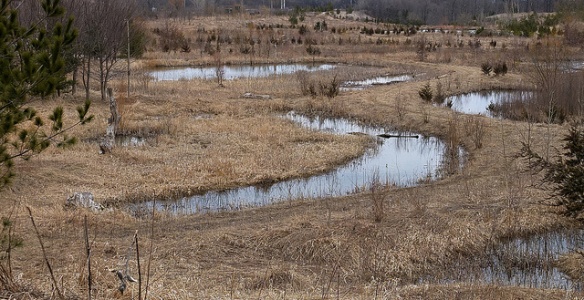Difference between revisions of "Wetlands"
Jump to navigation
Jump to search
Jenny Hill (talk | contribs) m |
Jenny Hill (talk | contribs) m (→Gallery) |
||
| Line 31: | Line 31: | ||
==Performance== | ==Performance== | ||
==Gallery== | ==Gallery== | ||
| − | {{Wetlands: Gallery}} | + | {{:Wetlands: Gallery}} |
| − | |||
==Construction== | ==Construction== | ||
==See also== | ==See also== | ||
==External links== | ==External links== | ||
Revision as of 13:10, 28 September 2018
Overview[edit]
Wetlands are an ideal technology for:
- Text A
- Text B
| Type A | Type B | Type C |
|---|---|---|
| Surface water | Minimal Any surface flow can be slowed with check dams |
Ponding is encouraged with check dams |
| Soil | Filter media required | Amendment preferable when possible |
| Underdrain | Common | Uncommon |
| Maintenance | Medium to high | Low |
| Stormwater benefit | High | Moderate |
| Biodiversity benefit | Increased with native planting | Typically lower |
Planning considerations[edit]
Design[edit]
Performance[edit]
Gallery[edit]
Emergent wetland vegetation supported by stormwater runoff at Kino Environmental Restoration Project. Photo by Matthew Grabau, US Fish and Wildlife Service
Azalea Park, Charlottesville VA - "This side of the park, formerly located along a runoff channel that led into Moore's Creek, has been converted into a wetland which supports a surprising amount of insect and amphibian life." -Credit and Photo: Scott Clark (certhia on Flickr).



